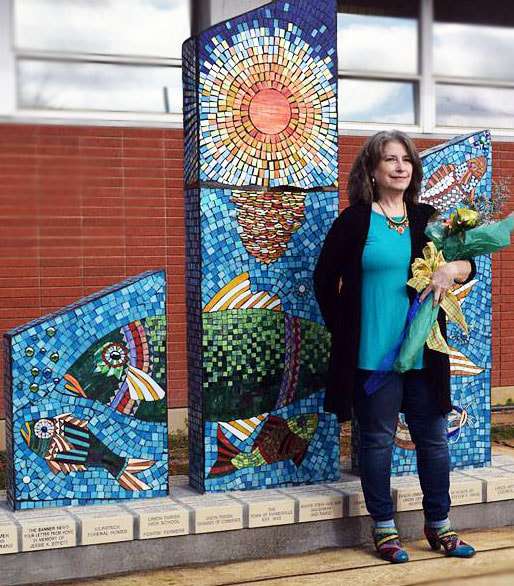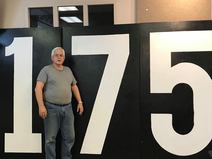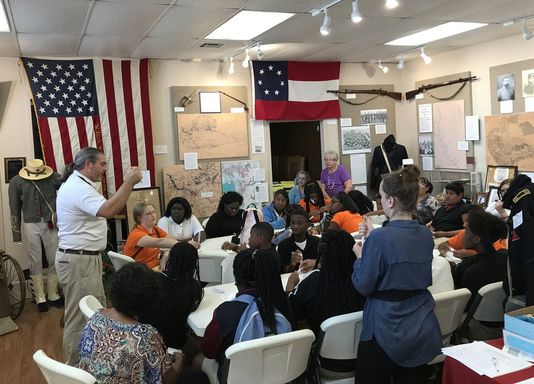A special documentary film recounting experiences of Union Parish educators is available for viewing on You Tube. This 45-minute film stars four Union Parish educators who also were students in local schools: Tommy Carr, Jackie Hill, Mike Lazenby, and Jennifer Wicker. Special thanks go to these four interviewees and to Charles Paxton, videographer and film producer. CLICK HERE to see the movie on You Tube.
|
Lights! Camera! Action!
A special documentary film recounting experiences of Union Parish educators is available for viewing on You Tube. This 45-minute film stars four Union Parish educators who also were students in local schools: Tommy Carr, Jackie Hill, Mike Lazenby, and Jennifer Wicker. Special thanks go to these four interviewees and to Charles Paxton, videographer and film producer. CLICK HERE to see the movie on You Tube.
0 Comments
What a year this will be! Union Museum of History and Art is proud to announce its lineup of exhibits and other events for 2019:
January 16-February 23: "Mis Quince - My Sweet 15" exhibit about the quinceanera tradition among Hispanic families of Union Parish. Curated by Mary Barrios, the exhibit features an beautiful and colorful array of gowns, dolls, and other memorabilia from the sacred and secular customs of girls' 15th birthday celebrations. March 26 - May 7: "Ag-mazing Union Parish" exhibit about the local agriculture industry and its people. Curated by Brittany Bennett Canterberry and Van Bennett. May 2: "Stars Over Broadway" dinner theater at Edgewood Plantation (Farmerville), featuring performance by O Sole Trio. June 17 - July 28: "The Pelican State Goes to War" traveling exhibit from the National World War II Museum in New Orleans. September - November: "They Serve and Protect" tribute to first responders of Union Parish Art installation dedicated in Farmerville - December 2018
The "Fishing Fantasy" art installation designed by local mosaic artist Jamie Anderson was unveiled and publicly dedicated Friday, Dec. 28, 2018, at its location on the south lawn of the Union Parish Courthouse in Farmerville. The Union Museum of History and Art led the project as a gift to the community. Second Circuit Court of Appeal Judge Jay McCallum and Farmerville Mayor M. Stein Baughman Jr. spoke briefly during the dedication ceremonies, emceed by museum board chairman Brittany Unkel. The seven-foot tall concrete sculpture is sheathed in colorful glass pieces and depicts rippling blue waters, many-hued fish, and abundant sunshine so beloved in Union Parish. The museum board is grateful to Anderson and others who made this project possible: the Union Parish Police Jury; James Gatson, concrete contractor; Brooke Foy, public art consultant; and all donors who purchased commemorative bricks. This project was supported in part by a grant from the Louisiana Division of the Arts, Office of Cultural Development, Department of Culture, Recreation and Tourism, in cooperation with the Louisiana State Arts Council, as administered by the Northeast Louisiana Arts Council, Inc. Funding has also been provided by the National Endowment for the Arts, Art Works.” The awe-inspiring "Threads of Glory" exhibit ended June 2, 2018, leaving us with fond memories of breathtakingly beautiful fabric arts of all description. Nearly 300 visitors immersed themselves in fiber artworks by 51 artisans from Union, Lincoln, and Ouachita parishes. Click HERE to see our gallery of exhibit photos.
We are immensely grateful to Union General Hospital and Kilpatrick Funeral Homes for generously supporting this art exhibit. Our talented curator for the exhibit was Karen Bradford, herself a renowned quilter, and former president of the North Louisiana Quilters Guild. And the 200-plus exhibit items were artfully arranged by our own creative genius, Alan Futch. From Oct. 20 to Dec. 2, 2017, Union Museum of History and Art featured a spectacular display in celebration of Farmerville's 175th anniversary. More than 330 visitors enjoyed the exhibit that contained a wealth of large photographs, original paintings, and artifacts that helped tell the town's long, interesting story. The exhibit was sponsored by Bruce E. Hampton.
As part of the exhibit, the museum showed its newly released video documentary "Memories of Farmerville," featuring interviews with four individuals, plus historic photographs. Our thanks to Kerry Hill of Hill Oil Company for sponsoring the video project, and to Charles Paxton for producing the memorable video. Copies of the 40-minute video are available for a donation of $10. Or tune in to the museum's You Tube channel at https://www.youtube.com/watch?v=TfxAzmUmKLs&t=767s Interviewees are Mayor Stein Baughman Jr., Mary Hill, Verdell Ventroy, and Marilyn Ludwig Wilhite. The museum's just-ended exhibit, "The Civil War in North Louisiana," drew 771 visits, with 34 percent of those visits by out-of-parish residents. The eight-week long event ended Wednesday, Sept. 20, on a high note: A group of 23 students and their teachers from Union Parish Junior High School visited, bringing questions and curiosity about the Civil War. Kevin Adkins, history teacher at Union Parish High School, gave the kids a brief overview of the war as it impacted North Louisiana. He then led the students in making paper cartridges such as those used by Civil War soldiers. Museum docents Jean Jones, Beverly Jay, and Mary Ruth Allred led the students in comparing medical practices of Civil War times to medicine today (quite different!).
Amid the Civil War uniforms, flags, weapons, and photographs, there are several small objects that silently capture the attention of every visitor to the current exhibit in the Union Museum of History and Art in Farmerville. The intriguing items are letters. Simple, yet profound, letters. All were written by young uneducated soldiers, lonely for home and family, fearful of death, and bewildered by the horrors they witnessed. “Dear Mother,” begins William H.H. Kennedy’s letter to Permelia Kennedy of Farmerville on January 14, 1863, written from a camp near Vicksburg. “I take mi pen in hand to inform you a few lines to let you know I am a live yet but I have been put near dead ever cence they had the battle.” The 22 year-old soldier writes of freezing cold weather with thin blankets, lack of food and medicine, and rampant illness among troops. Kennedy recounts the battle he has just endured and war’s deafening roar. His next lines tighten the throat: “I never felt bad scird but wonct thar was a fellow a seting by me an ther come along a cannon ball an took off his head…”
Written from camp in Tennessee, James M. Tanner’s letter to his sister Permeliann in July 1863 begs her to write to him. “I wuld like to here from all my relashuns.” He died a few days later. James fought for the Confederacy. His brother Lewis served in a Union regiment. For the “Civil War in North Louisiana” exhibit, Dr. Gary Joiner, Chair and Professor of History at LSU-Shreveport, has provided more than 40 historic maps and images that help us understand our region’s place in the national conflict. Twenty-four individuals have contributed other historic treasures such as minie balls, guns, swords, family photographs, and a New York newspaper announcing President Lincoln’s death on April 15, 1865. Several re-enactors have contributed accurate replicas of Confederate and Union uniforms and accoutrements. A special feature is the series of seven talks by regional experts: "Civil War-era Floral Traditions" by Alan Futch, "The 31st Louisiana Infantry Regiment" by Kevin Adkins, "The Vicksburg Campaign" by Terry Winschel, "The Red River Campaign" by Gary Joiner, "Civil War Medicine" by Dr. Tom Pressly, and "The Louisiana Tigers,” by Terry L. Jones. The American Civil War took the lives of some 630,000 soldiers, mostly through disease and infection. When guns fell silent in May 1865, two percent of the American population had been sacrificed. Throughout the South and the North, regiments were raised in specific locales, so that brothers and friends marched off to war together. Those same comrades often died together, too, devastating families and communities with sometimes overwhelming loss. North Louisiana contributed thousands of men to the Civil War, serving in regiments such as the 31st Louisiana Infantry which fought at Vicksburg. From the Red River valley to the Mississippi River, significant events took place that impacted the course of the war. War developments in North Louisiana also altered the careers of several military leaders, and ended presidential aspirations of U.S. General Nathaniel P. Banks. Documentary film maker Ken Burns once said, “If you want to know about this thing called the United States of America you have to know about the Civil War.” Likewise, understanding Louisiana’s unique story surely requires a study of its Civil War experiences. |
AuthorJean W. Jones, Exhibits and Program Director Archives
September 2021
Categories |




 RSS Feed
RSS Feed